Sometimes we find ourselves in strange places, and without a fly rod.
Like the Panama Canal. Surrounded by tarpon.
It was a work trip and an important one. The 19th conference of the parties of the Convention on International Trade in Endangered Species (CITES CoP19) gathered in Panama to decide the fate of hundreds of wildlife species threatened by trade – everything from African elephants to tiny glass frogs.
By the end of week one, CITES delegates passed major new protections to safeguard dwindling populations of hammerheads and other sharks – the first of what would become a string of victories announced during the CoP. So, during the weekend break between negotiations, a few of us decided to make some celebratory casts. We asked around and found a tour operator who arranged a half day trip to fish for tarpon in the former Panama Canal Zone. How exactly we’d fish for them, we weren’t sure since none of us brought our own tackle.
The Panama Canal’s tarpon are, as Bob Ross would say, a happy accident. They ascended through locks from the Atlantic 100 years ago and prospered in Lake Gatun, the 21-mile-long impoundment that ocean-going vessels must navigate between oceans. (Some tarpon kept going all the way to the Pacific and have since established a feral population as far south as the Colombia/Ecuador border.)
The next morning, four accidental tarpon anglers stepped onto a vintage 25-foot wooden panga equipped with a newish, purring 80 horsepower four stroke. We headed down the Chagres River and into the canal itself, passing ubiquitous canal infrastructure: two-story-tall navigational buoys, dredging derricks, a lighthouse rising from the rainforest. On the far shore stood a terraced hillside – perhaps scooped out by Teddy Roosevelt himself who famously insisted on operating a steam shovel for a photo op during construction in 1906.
All the while we cleaved through impressive wakes pushed by massive ships: Death-Star sized containerships that blocked out the sun; rusting bulk carriers; tankers with strange names like Gaslog Geneva.
Eventually we swung out of the shipping lanes and eased into a wide bay. In the distance, wisps of low, early morning clouds shrouded the tops of thickly forested, rolling hills. Much of the former Canal Zone is ringed with rainforest left intact by forward-thinking engineers who knew even 120 years ago that clear-cutting would destabilize watersheds. They needed the lake deep and navigable, so the forests remained. The unintended benefit is that today, many of those same protected forests are national parks. They swing with monkeys – capuchins, tamarins, howlers – and slow-crawl with sloths. Nearly 500 bird species, from yellow-throated toucans to moustached antwrens, flutter and flit in the forest canopy.

A long cast off the boat, a pod of mid-sized tarpon rolled, scattering bait. They left behind swirls and eddies that lingered for long seconds before finally breaking up. Then another group rose, this time so close I could hear deep sucking sounds and see golf-ball-sized eyes.
But with my ten-weight resting comfortably at home some 2,000-plus miles away, I had a hunch what was coming next. Yep, time to troll. The guide passed out rods rigged with seven-inch long diving plugs and began making slow turns in the panga. So, I grabbed one and hung on. When in the Canal Zone…
A rod went off. Kurt Duchez, a biologist with the Wildlife Conservation Society who usually fights wildlife traffickers, now battled an unseen fish. The rod bucked a few times, but it soon became clear this was no tarpon. A minute later, a bright peacock bass of a few pounds came to the net. Earlier, Duchez showed me images on his phone of a 25-pound mahi mahi he recently caught in his home waters of Guatemala, but he still beamed like a kid as he held the bedazzled peacock – his first ever.
We continued to troll past rolling tarpon, but nothing happened. All the while, I imagined a well-placed cockroach or toad would have gotten crushed. Eventually, we swapped out deep divers for poppers and sputtered them back to the boat. But the fish were mercurial, coming up over here, and then back over there, and then 100 feet from where your lure just landed.
We drifted along casting and casting. At one point the only sound was the gurgling of poppers backdropped with the guttural, raspy calls of black howler monkeys from a nearby island. All the while, tarpon porpoised, gulped, and chased. But mostly, they ignored.
Except for one.
Three feet off the boat, five feet of tarpon exploded on my plug throwing a great plume of whitewater and flashing a latticework of scales. But then… nothing. The fish missed and was not coming back.
I stood there for a few moments letting images and audio burn into the dark hard drive where phantoms of lost fish metastasize. Fly rod or no fly rod, this one hurt. A hunch told me it would be our lone tarpon of the morning, and it turned out to be true. The sun rose higher, the fish stopped working, and the Central American heat slowly wilted us until we all agreed it was time to reel up and head back to the dock.
The guide started the motor, which gurgled quietly as he stowed gear for the ride back to the dock. A howler roared in the distance. In front of us, a 900-foot container ship named NYK Romulus out of Singapore lumbered past on its way to the Atlantic. A weird, kind-of-fun trip but goddamn, that’s the last time I don’t throw a rod tube in my carry-on.




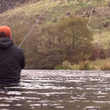
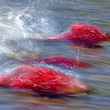
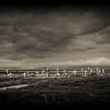
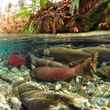
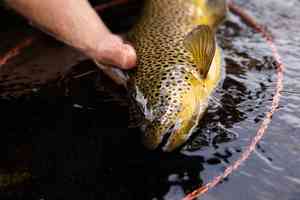

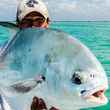
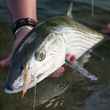
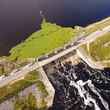

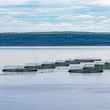
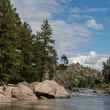




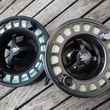




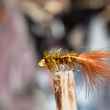
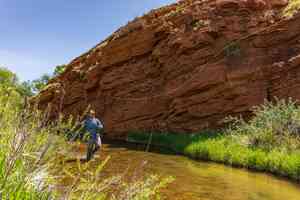
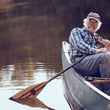

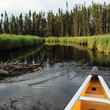

Comments
Anthony Johnson replied on Permalink
Thanks for bringing back some great memories for me. As a young man, I was stationed in a task force based out of Panama. When I arrived in Panama in the early 90's, I was told that Peacocks wouldn't hit artificial bait so, of course, my buddies and I used minnows. After a few times of catching 30-40 small peacocks, we decided to start using artificials. We caught fish.....less fish, but bigger fish. When we switched to flies we started catching everything! Much to the disdain of the locals waiting at the docks to clean our fish, when we quit using minnows, we also started practicing catch and release. On the subject of the howlers....I don't miss them one bit. It's hard to sleep on an island surrounded by the little Diablo.
Thank you for a great article.
Ed Willis replied on Permalink
I served in the PCZ for almost 5 years '70-'75.
I was introduced to Peacocks early on. Fished Rio Chages and Lake Gatun often. I arrived in Panama with two duffle bags, left with wife, baby and 5K lbs of furniture along with a love of Panama. I have returned each year to visit family, but never miss the opportunity to catch Peacock Bass. Once catching the first one on the fly, that has become my annual ritual. Dont miss the chance to visit Costa Rica's central highlands and chase Tico Trout, beautiful scenery and opportunistic fish. Tight Lines To All.
Pages